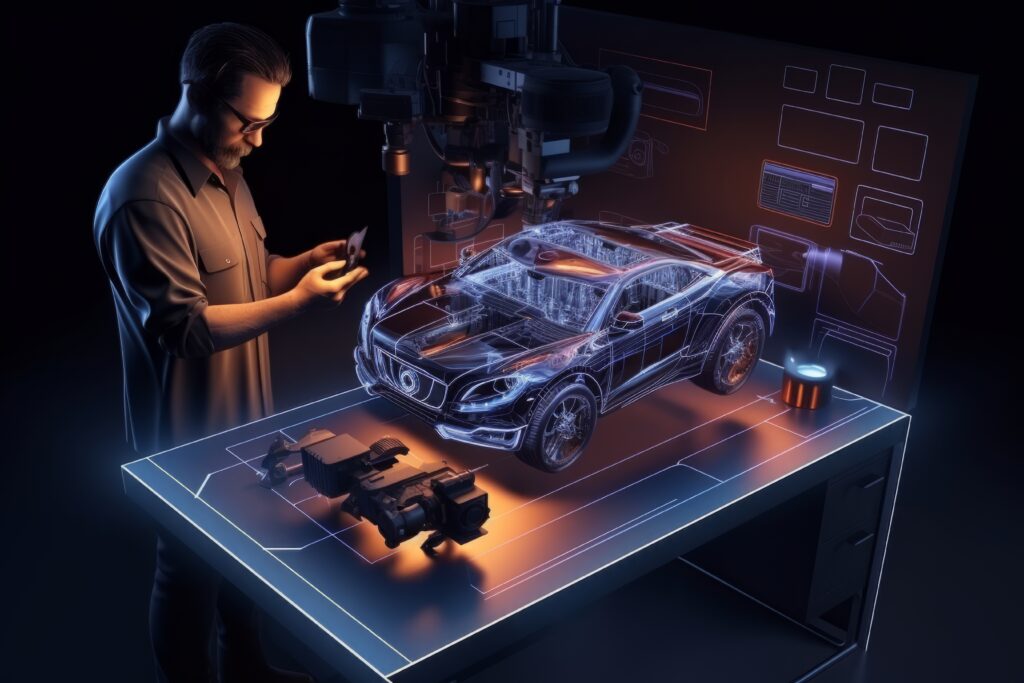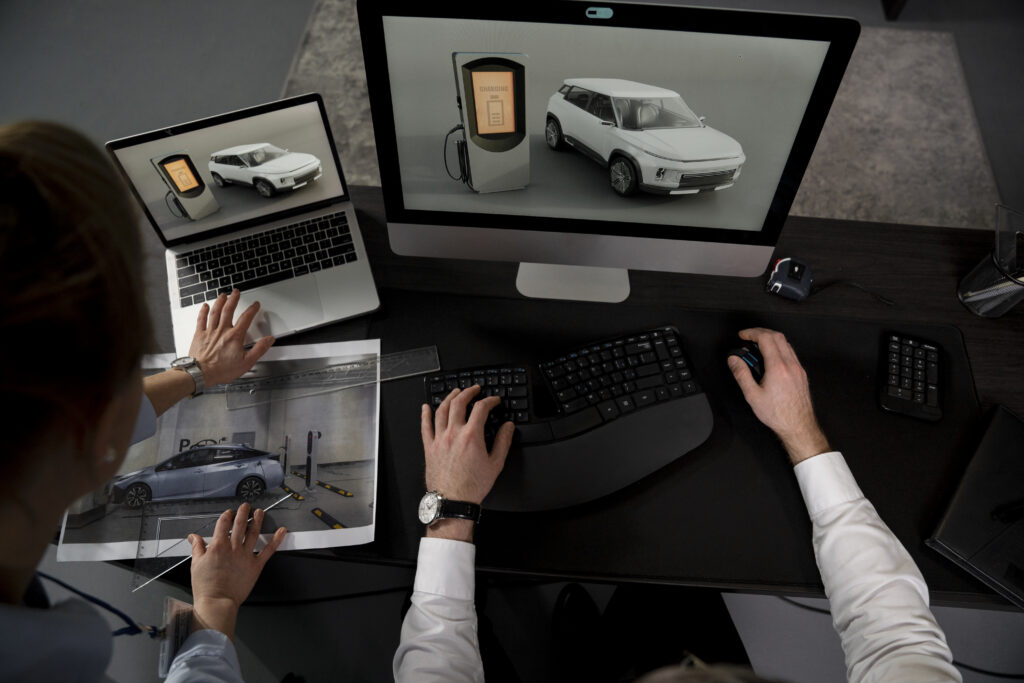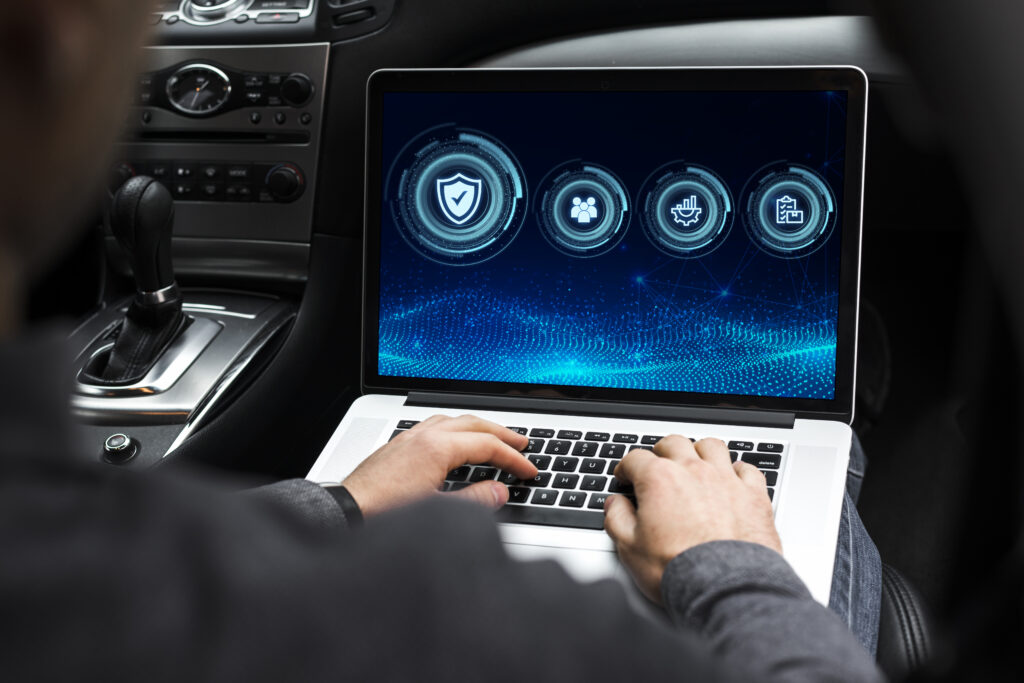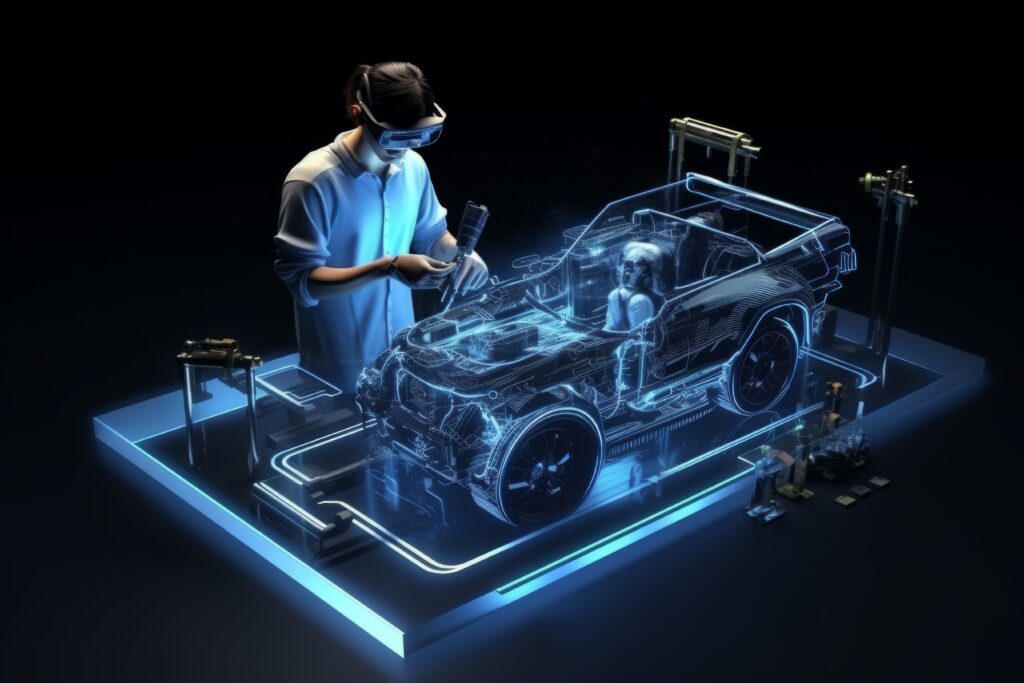Core Software Domains
- ADAS & Autonomy: Lane-keeping, adaptive cruise, automatic braking, parking software. AI/ML-driven perception from sensor data is at the core .
- Infotainment & UX: Navigation, media, climate—all combined; more personalized and over-the-air configurable .
- Vehicle Connectivity & Telematics: IoT, V2X, remote diagnostics, real-time data analysis, important for fleets and consumer experience.
- Software-Defined Vehicles (SDVs): Zonal architectures, centralized control & service-oriented software allow for dynamic features and OTA updates.
Industry Trends (2025)
- AI & Generative AI:
Vehicle decision-making is increasingly powered by AI/ML. Generative AI is even being experimented to auto-generate and formally verify code (e.g. GPT‑4o + CARLA trial). - Zonal & Service-Based Architectures:
Mercedes‑Benz MB.OS, GM Ultifi adopt zone-controller and SOA designs to minimize wiring, centralize update, and decouple software from hardware. - OTA Updates & Cloud Integration:
Bugs are corrected and features are added remotely with over-the-air updates. Secure OTA functionality is becoming the norm . - Cybersecurity as Foundation:
As connectivity widens and OTA becomes more prevalent, secure cyber protection (ISO/SAE 21434, WP.29, secure boot, HSMs, intrusion detection) is now a necessity . - Functional Safety Standards:
Safety compliance to ISO 26262 (ASIL-rated) is required. Best practices (MISRA C/C++) provide software reliability and traceability . - Agile & DevOps at Scale:
Agile approaches and constant feedback loops are extending to vehicle-level development, supporting quicker cycles without compromising on safety. - Digital Twins & Virtual Simulation:
Virtual simulation speeds up testing—cloud-based digital twins have the potential to save costs by ~30% and avoid hardware limitations . - Data Monetization & New Services:
OEMs transition to SaaS and subscriptions—feature unlocks, data services—forecasted automotive software monetization to reach ~$20 billion by 2030 . - Open‑Source & Alliances:
Alliances such as AUTOSAR, COVESA, and open architectures drive interoperability and collective innovation.

Challenges & Solutions
- Enormous Software Complexity: Vehicles now operate with 100+ million lines of code and 100+ ECUs, necessitating modular and scalable design .
- Safety vs. Agility Tension: Aligning rapid feature delivery with demanding functional safety compliance requires agile methods integrating compliance .
- Cyber Threats: The increased attack surface (CAN, V2X, Bluetooth) demands secure design, frequent OTA patches, and proactive threat intelligence.
- Resources & Skills Shortage: Such a shift to software and high-voltage systems necessitates colossal reskilling of personnel.
- Interoperability & Standard Divergence: Several platforms (AUTOSAR, COVESA) need to be integrated with caution to prevent vendor lock-in.
Hardware–Software Integration
Centralized E/E architecture is the direction of the shift, using:
- Zonal computing (replacing domain controllers)
- SOA-like APIs
- Master Electronic Control Units (MCUs) that support over-the-air deployment.
Simulation and digital twins allow for early-stage development prior to hardware availability.
Future Outlook
- GenAI for Code Automation: LLMs combined with formal methods could speed up reliable code generation .
- Vehicle Data-Driven Services: Personalization based on data, fleet telematics, and safety insights backed by real-time analytics .
- Increased OTA Capabilities: More remote updates, feature unlocking, and service-based monetization via cloud platforms .
- Post-Quantum Cryptography & AI‑based intrusion detection as next-generation cybersecurity techniques.
- Standardization Drive: Wider uptake of AUTOSAR, COVESA, SOAFEE, and international cooperation to enable joint digital marketplaces.

New Insights & Innovations
1. Quantum Internet for Cars
New research investigates how quantum internet technology—such as quantum-secured communication—can be extended to vehicle systems, including stronger sensor fusion, privacy, and cryptographic security in autonomous and connected vehicles. It’s early-stage, with eyes on long-term breakthroughs in security and data integrity.
2. Component‑Based & Hexagonal Architectures
Developers are moving towards component-based and hexagonal (ports/adapters) architectures to create more modular, testable, and hardware-agnostic vehicle software—enabling maintainability, reuse, and easier validation across ECUs.
3. Predictive Maintenance with AI & IoT
Using IoT sensors and real-time telemetry, AI-based systems now predict vehicle and part health, allowing for preemptive maintenance, reducing warranty costs, and enhancing fleet uptime—all enabled by cloud-based analytics.
4. 5G/6G & Real-Time V2X Communications
The deployment of 5G—and upcoming 6G—networks is facilitating ultra-low latency Vehicle-to-Everything (V2X) communication. This enables smart traffic integration, safer fleet operations, and dynamic vehicle interaction with infrastructure such as traffic lights and emergency vehicles .
5. Blockchain for Resilience & Transparency
Blockchain is being explored for applications such as supply chain traceability, secure data exchange, vehicle identity authentication, and anti-tampering systems—building trust in software-defined vehicle ecosystems .

Development Approaches & Tools
A. Generative AI + Formal Methods
New workflows are pairing LLMs (e.g., GPT-4o) with model-based engineering to automatically generate code from requirements, and then formally verify it (e.g., in CARLA/ROS2 drivers), reducing development while ensuring safety and integration requirements.
B. Agile in Safety-Critical Contexts
Studies emphasize how Agile processes—while beneficial to agility—need to be properly tailored for automotive requirements (e.g., ISO 26262), seeking the right balance between iterative cycles and strict verification for compliance with safety.
C. Digital Twins & Virtual Testing
Automotive development is strongly adopting simulation. Cloud-based virtual twins enable OEMs to mock up integration, performance, and safety ahead of physical prototypes, cutting time and hardware dependencies.



